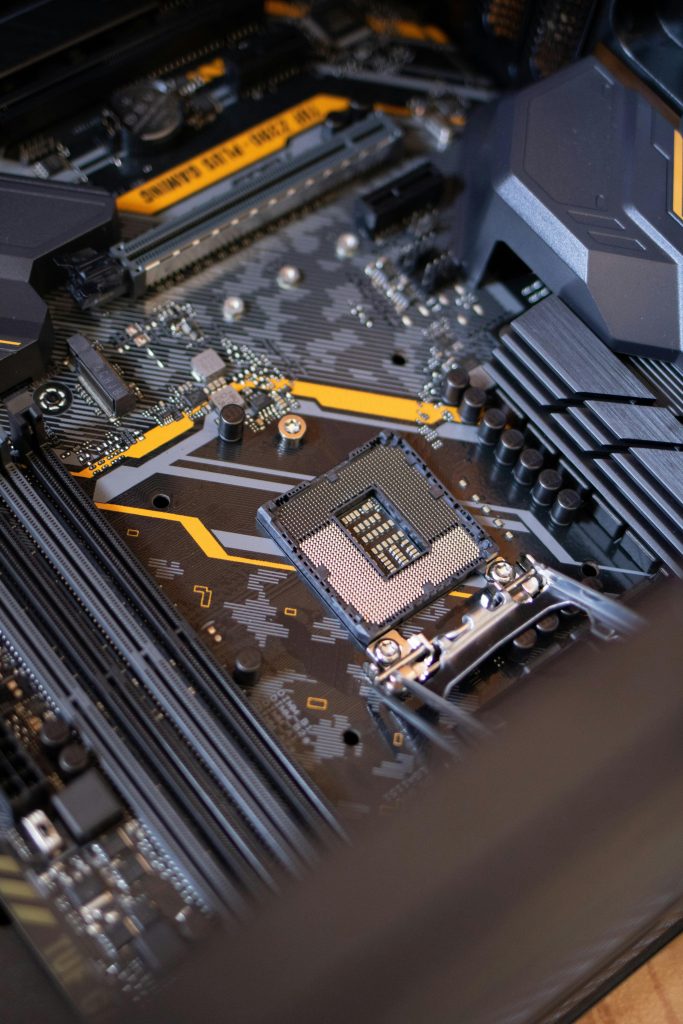Introduction
To Build a PC for video editing is not just about assembling hardware; it’s about creating a workstation that meets the demands of your creative endeavors. Whether you’re editing short films, YouTube videos, or commercial content, the right PC can make all the difference.

Understanding Your Needs
The first step in building your video editing PC is to clearly understand your specific requirements. Video editing tasks can vary significantly, from editing short clips to working with 4K or even 8K footage. The complexity of your projects, the software you use, and your workflow all play crucial roles in determining the kind of PC you need. For instance, using sophisticated software like Adobe Premiere Pro or VSDC Free Video Editor can have different hardware demands.
Budget Considerations
Setting a budget is crucial in the PC building process. It’s easy to overspend on high-end components, but with careful planning, you can allocate your budget to get the most bang for your buck. Balancing the cost with performance needs is key. Remember, investing in the right areas will save you money in the long run by avoiding frequent upgrades.
Essential Components for a Video Editing PC
To build an effective video editing PC, certain components are non-negotiable. Each component plays a vital role in the overall performance of your system.
Processor (CPU)
The processor is the brain of your computer. For video editing, you need a CPU that can handle multi-threading efficiently. A higher number of cores and threads will significantly improve your editing and rendering speeds. Look for the latest generation processors that offer a balance between performance and power consumption.
Graphics Card (GPU)
A powerful GPU is a must for video editing, especially if you’re using GPU-accelerated effects or working with 3D animations. A high-quality graphics card will drastically reduce rendering times and improve playback performance. This is particularly relevant when using software like VSDC Free Video Editor, which can leverage GPU acceleration for smoother workflow.
Memory (RAM)
RAM is critical for video editing. More RAM allows you to work with larger files and multiple layers without slowing down. For basic editing, 16GB is a good start, but 32GB or more is recommended for professional work, especially with high-resolution footage.
Storage Solutions
Storage is twofold: you need fast storage for your active projects and ample storage for raw footage and archives. An SSD (Solid State Drive) is essential for your operating system and software, offering quick boot and load times. For storage, larger HDDs (Hard Disk Drives) are cost-effective for storing large video files.
Motherboard
Your motherboard is the backbone that ties all your components together. Ensure it has enough ports and supports the latest standards for your CPU, RAM, and other peripherals.
Power Supply Unit (PSU)
A reliable power supply is vital, especially when running high-performance components. Opt for a PSU with higher wattage than your current needs to allow for future upgrades.
Cooling System
Effective cooling is essential for maintaining the performance and longevity of your PC. Consider a good quality air or liquid cooling system to keep temperatures down during intensive video editing tasks.
Step-by-Step Guide to Assembling Your PC
Assembling your PC can be a fulfilling experience. With the right tools and a bit of patience, you can put together a powerful machine.
Preparing Your Workspace
Create a clean, well-lit, and static-free workspace. Gather all the necessary tools, including screwdrivers, and keep your components organized.
Assembling the Components
Start by installing the CPU, RAM, and cooling system onto the motherboard before placing it in the case. Follow up with the GPU, storage drives, and finally, connect all the cables meticulously. Double-check every connection to ensure everything is secure and properly placed.
Installing the Operating System and Software
Once your PC is ready, install your preferred operating system, followed by all necessary drivers. Install your video editing software, like VSDC Free Video Editor, to start editing your projects.
Optimization Tips for Video Editing
Optimizing your PC for video editing ensures smoother performance and faster render times. Regularly update your software and drivers, fine-tune your operating system settings for performance, and consider overclocking your CPU or GPU for additional speed boosts.
Conclusion
Building a custom PC for video editing is a strategic investment that pays off in the quality and efficiency of your work. By carefully selecting components and assembling them with precision, you create a tool that enhances your creative capabilities, making the editing process more enjoyable and productive.




